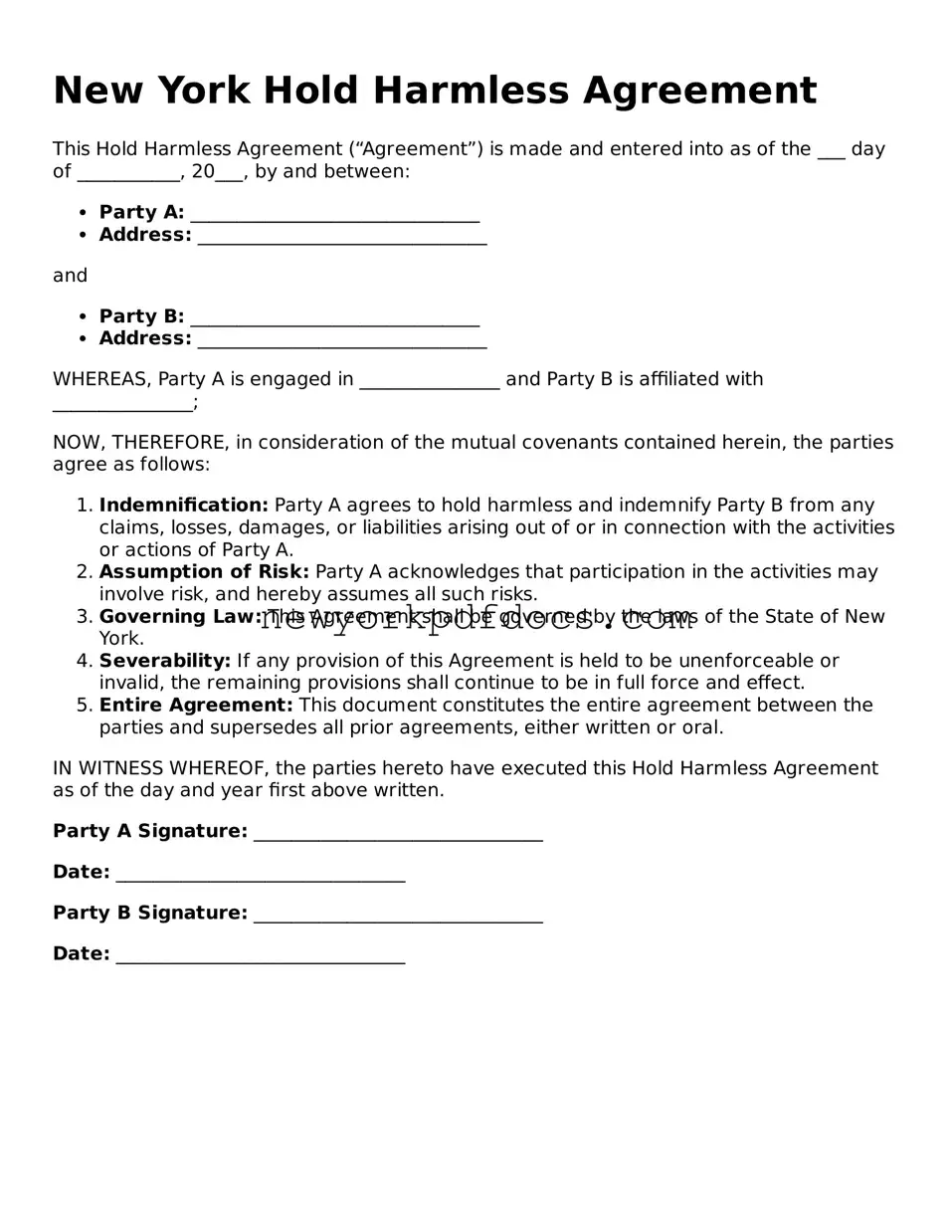When filling out a New York Hold Harmless Agreement form, many individuals make common mistakes that can lead to confusion or even legal issues down the line. One frequent error is failing to read the entire document carefully. This agreement often contains important clauses that outline the responsibilities and liabilities of each party. Skimming through the text can result in misunderstandings about what is being agreed upon.
Another mistake is not providing complete information. Incomplete forms can create ambiguity. For instance, missing names, addresses, or specific details about the event or activity can lead to complications. It’s crucial to ensure that all relevant information is accurately filled out to avoid any potential disputes.
Many people also overlook the importance of signatures. A common oversight is not having all required parties sign the agreement. Without proper signatures, the document may not hold up in court, rendering it ineffective. Each party involved should review and sign the form to confirm their understanding and acceptance of the terms.
Additionally, individuals sometimes fail to date the agreement. A missing date can lead to confusion about when the agreement was made or when it takes effect. Including the date helps establish a clear timeline and can be vital in case of disputes.
Another frequent error is neglecting to consult with a legal expert. While the form may seem straightforward, legal language can be tricky. Seeking professional advice can help clarify any confusing terms and ensure that the agreement meets all legal requirements.
Some people may also ignore the need for witnesses or notarization. Depending on the nature of the agreement, having a witness or notary public may be necessary to validate the document. Failing to include this step can weaken the enforceability of the agreement.
Moreover, individuals often underestimate the significance of understanding the terms. Each clause in the agreement has implications. Failing to comprehend what you are signing can lead to unintended consequences. Take the time to understand each part of the agreement fully.
Another common mistake is not keeping a copy of the signed agreement. After the form is completed, it’s essential to retain a copy for your records. This can be invaluable in case of disputes or if you need to reference the agreement in the future.
People also frequently misinterpret the scope of the agreement. Some may think that signing a Hold Harmless Agreement absolves them of all responsibility. However, this is not always the case. Understanding the limitations of the agreement is crucial to avoid potential liability.
Lastly, individuals sometimes rush through the process. Taking the time to review, complete, and understand the Hold Harmless Agreement can save you from future headaches. Patience and attention to detail are key to ensuring that your rights and responsibilities are clearly defined.
